's-Hertogenbosch, commonly known as Den Bosch, is a city in the south of the Netherlands and the capital of the province of North Brabant. Once a stronghold, vital in the protection of the young Dutch nation, Den Bosch has a charming and well-preserved medieval centre. Wander through the winding streets to see Saint John's Cathedral and then pick out a street terrace on the market square to relax with a chilling beer. Take a boat to see part of the unique Binnendieze, a subterranean network of canals under the city, or head to the south part of town where the ancient ramparts still mark the border of the city and the beginning of a natural reserve area. In short: what Den Bosch lacks in fame, it makes up for in charm. A place well worth visiting.
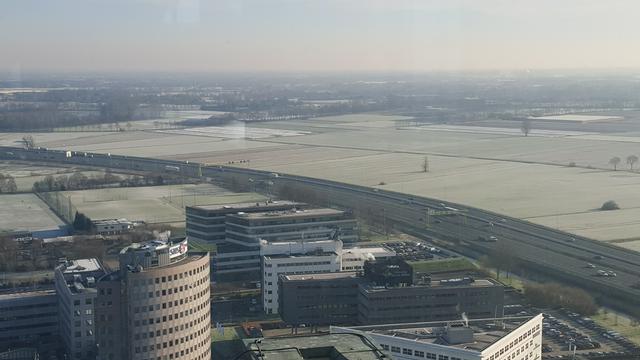 The population of Den Bosch is approximately 151,000 and with that it is reaching its limits, because almost all the ground available for building has been used. This does not mean that the whole area is one big city, as there are several (big) parks. Likewise, the southern edge of city is totally green as this is a protected natural reserve.
The population of Den Bosch is approximately 151,000 and with that it is reaching its limits, because almost all the ground available for building has been used. This does not mean that the whole area is one big city, as there are several (big) parks. Likewise, the southern edge of city is totally green as this is a protected natural reserve.
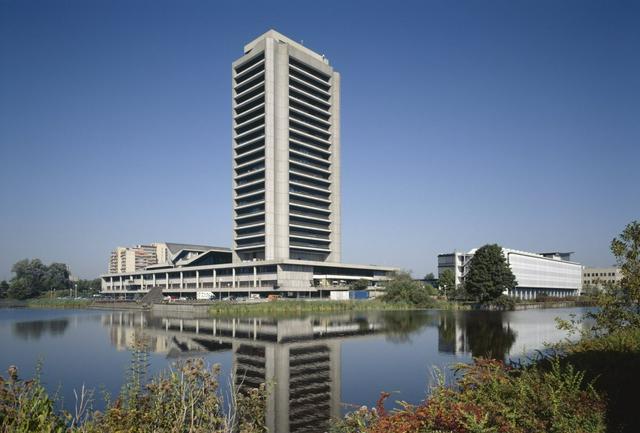 Den Bosch can be seen in 9 regions (note: these regions are built up of several neighborhoods):
Den Bosch can be seen in 9 regions (note: these regions are built up of several neighborhoods):
- Center includes the whole area inside the city walls. Most sights and places to visit can be found in this area.
- North is the area between the city center and the A59, which includes the neighborhoods de Rompert, Orthen, Herven and the area around the Prins Hendrik Park.
- Maaspoort is the area north of the A59. Mostly a residential area with some industry.
- Hintham is the area around the FC Den Bosch football stadium.
- South is the area between the city center and the A2 highway to the south. Residential, but with also a large amount of office buildings.
- West is the area west of the central station. High presence of industry, as wel as the residential neighborhoods Kruiskamp and Helftheuvel. The Brabanthallen can be found here.
- Engelen is the village of Engelen which is going through the development of Haverleij, a combined residential complex on a golf course.
- Rosmalen, a town to the east of the A2.
- Empel, small village to the north of Rosmalen.
Most visitor attractions are found in the center, except for the footballstadium and the Sportiom.
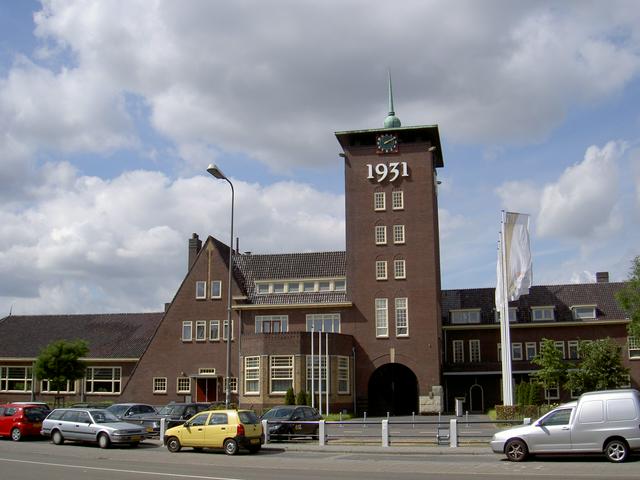
Center includes the whole area inside the city walls. Most sights and places to visit can be found in this area.
North is the area between the city center and the A59, which includes the neighborhoods de Rompert, Orthen, Herven and the area around the Prins Hendrik Park.
Maaspoort is the area north of the A59. Mostly a residential area with some industry.
Hintham is the area around the FC Den Bosch football stadium.
South is the area between the city center and the A2 highway to the south. Residential, but with also a large amount of office buildings.
West is the area west of the central station. High presence of industry, as wel as the residential neighborhoods Kruiskamp and Helftheuvel. The Brabanthallen can be found here.
Engelen is the village of Engelen which is going through the development of Haverleij, a combined residential complex on a golf course.
Rosmalen, a town to the east of the A2.
Empel, small village to the north of Rosmalen.
's-Hertogenbosch is a medieval city and among the oldest cities in the Netherlands. As the city center is historically protected there are still a lot of medieval buildings to be found. Wander around and see the traditional building style.
When the Netherlands were still young it was a fortified city that served for the protection of the Netherlands. Especially on the south side of the city, a lot of these fortifications have been saved and over time restored. Start at Bastion Vught and walk northwards via the Parklaan, Spinhuiswal, Zuidwal and Bastion Oranje and Hekellaan until you reach the bridge over the Zuid Willemsvaart. This way you cover the best part of the old fortifications. In 2004, the city was awarded European Fortress of the year.
- Saint John's Cathedral. One of the most prominent landmarks of Den Bosch. Building started in 1380, in Gothic style. The exterior of the building had been deteriorating fast due to acid rain and restoration works started in 1960. It has taken many years to restore the full church, but the works are completed and the church can be seen in all its glory. The restoration also included the interior. Of course some minor maintenance takes place constantly.
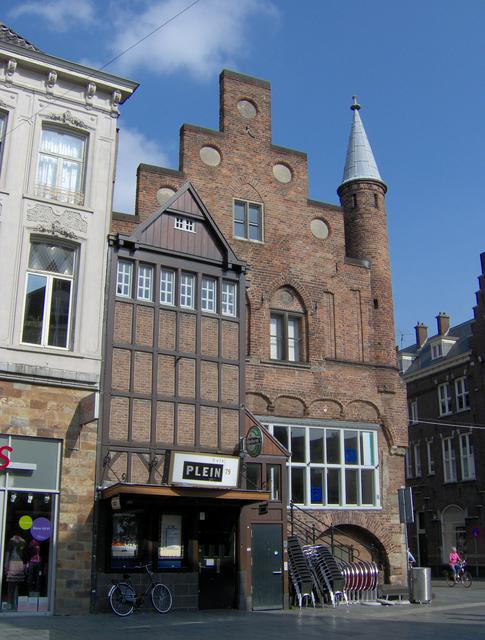
- The Moriaan. The oldest brick building in The Netherlands, built in the 13th century. It houses the Tourist Center (VVV), and in the basement, the rock cafe Plein79.
- Town Hall, Markt 1 (south side of the market square. The facade was built in the 17th century and reflects Dutch classicism. The cellars are from about 1200, with a restaurant for coffee, tea, lunch, etc.
- The North Brabant Museum. It houses a collection of art and historical artifacts, from pre-roman times to the 20th century. Special exibitions are a must to see, the 'Hyeronimus Bosch Exhibition' with his original work from museums all over the world.
- City Museum 's-Hertogenbosch. A museum for modern art. Together they form one of the biggest museums of the Netherlands. The ground floor can be visited freely, and it's up to you to decide to see more.
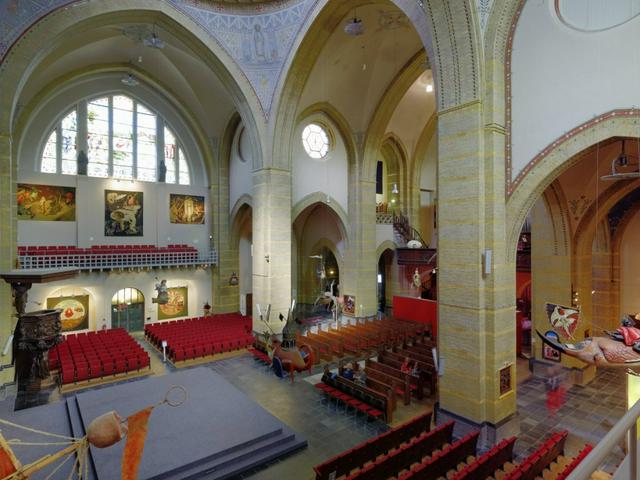
- Jhyeronimus Bosch Art Center, Hinthamerstraat (in a former church. It displays all the works of the famous painter. All in live sized copies. Combined with 3D models of his monsters and objects. Because the paintings are copies, you can get very close to them and the guide will open or close the panels to get the full picture. Visitors, young and old, can enjoy this permanent exhibition.
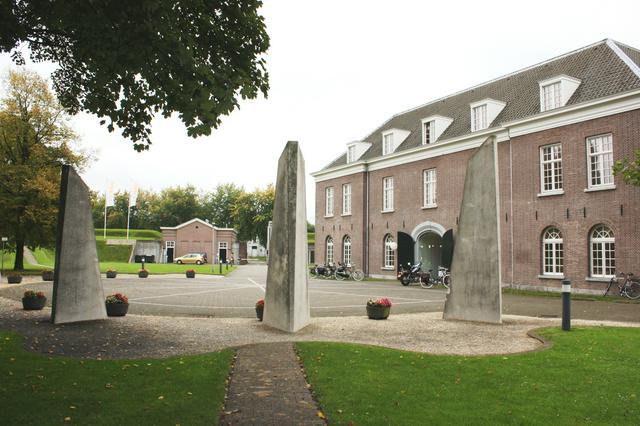
- Citadel. This fortress was added to the city later and is not directly included in the fortifications but sort of pasted on. It held the garrison to protect the city or, if necessary, to counter an uprising in the city. It is now part of the national archive.
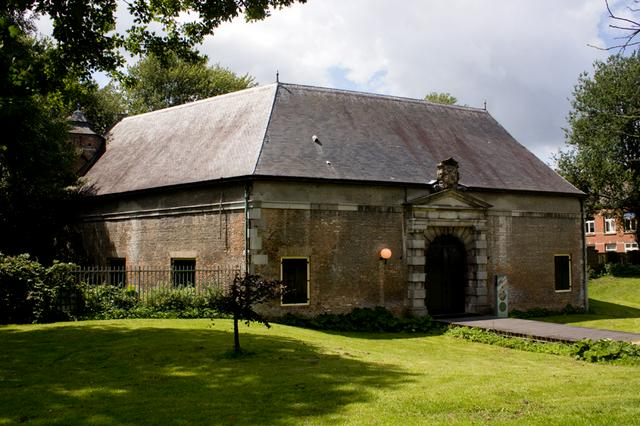
- Kruithuis. It is an hexagonal building and one of the last of its kind. It is used as a museum for art.
Hidden below the old city is a canal network called the Binnendieze that once stretched 22 km. It started out as a regular river, the Dommel, running through the city in medieval times but due to lack of space in the city, people started building their houses and roads over the river. In later times it functioned as a sewer and fell into disrepair. The remaining sixth of the old waterway system has been renovated, and it is possible to take several guided subterranean boat trips through it.
Saint John's Cathedral. One of the most prominent landmarks of Den Bosch. Building started in 1380, in Gothic style. The exterior of the building had been deteriorating fast due to acid rain and restoration works started in 1960. It has taken many years to restore the full church, but the works are completed and the church can be seen in all its glory. The restoration also included the interior. Of course some minor maintenance takes place constantly.
The Moriaan. The oldest brick building in The Netherlands, built in the 13th century. It houses the Tourist Center (VVV), and in the basement, the rock cafe Plein79.
Town Hall, Markt 1 (south side of the market square. The facade was built in the 17th century and reflects Dutch classicism. The cellars are from about 1200, with a restaurant for coffee, tea, lunch, etc.
The North Brabant Museum. It houses a collection of art and historical artifacts, from pre-roman times to the 20th century. Special exibitions are a must to see, the 'Hyeronimus Bosch Exhibition' with his original work from museums all over the world.
City Museum 's-Hertogenbosch. A museum for modern art. Together they form one of the biggest museums of the Netherlands. The ground floor can be visited freely, and it's up to you to decide to see more.
Jhyeronimus Bosch Art Center, Hinthamerstraat (in a former church. It displays all the works of the famous painter. All in live sized copies. Combined with 3D models of his monsters and objects. Because the paintings are copies, you can get very close to them and the guide will open or close the panels to get the full picture. Visitors, young and old, can enjoy this permanent exhibition.
Citadel. This fortress was added to the city later and is not directly included in the fortifications but sort of pasted on. It held the garrison to protect the city or, if necessary, to counter an uprising in the city. It is now part of the national archive.
Kruithuis. It is an hexagonal building and one of the last of its kind. It is used as a museum for art.
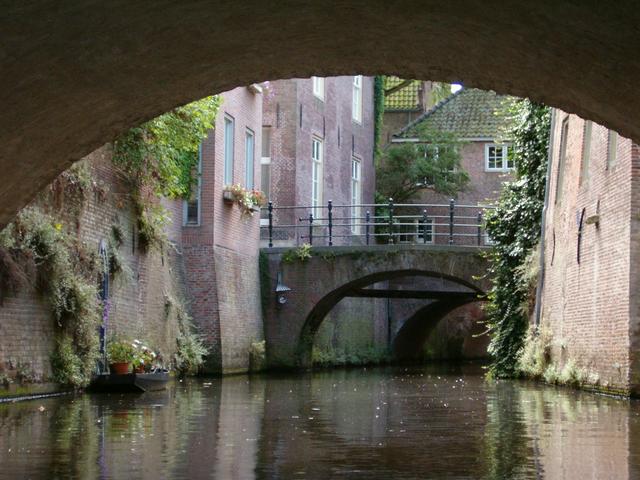
- Take a boat on the Binnendieze, a river that goes below the houses of the center of town, which was used historically as an open sewer, but is now quite a special tour. There are several tours available. It is a popular tour so be aware when booking a time. Tickets can be bought at the Bolwerk which also have a beautiful café and a restroom free of charge.
Den Bosch is a popular place for shopping, combining a charming historic atmosphere with a wide variety of stores. In the city centre you'll find all the major chains and department stores. For more characteristic speciality stores or small boutiques try the Snellestraat or the so-called Bossche Kwartier, meaning the small streets around the Fonteinstraat. The Verwerstraat, with its large monumental buildings, is the place to go for antiques, fashion and design. The Vughterstraat is another excellent pick, with clothing shops as well as some fine home decoration and furniture places.
Markets are frequently held on the large market square. The main market is on Saturdays (09:00-17:00) and has a wide selection of food and non-food products. On Wednesday the selection is similar, but the market somewhat smaller. On Fridays, there's a biological market (09:00-14:00) with a good selection of high-quality, mostly regional products. There's another regular market on every first Sunday of the month, but it's a lot smaller than the one on Saturday.
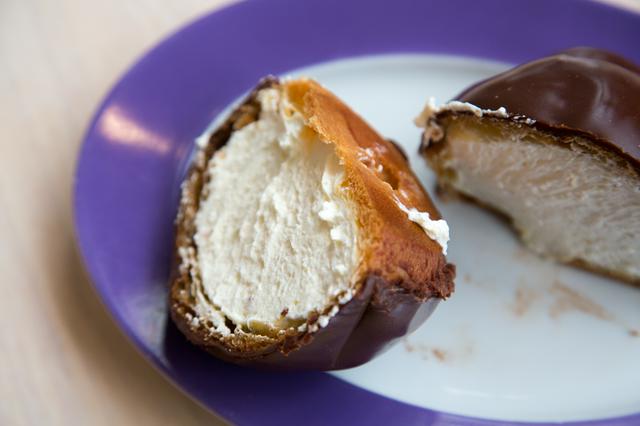
The city is famous for a local pastry called "Bossche Bol" or "moorkop", a must-try for any visitor. It's a chocolate ball filled with cream, the size of a tennis ball, typically eaten with a cup of coffee in the afternoon but also for dessert. It makes for a fine sweet treat when you kick back and relax at one of the many cafés, after a day of walking through town.
- Jan de Groot, Stationsweg 24. This bakery is particularly well-known for its Bossche bollen and caters to many of the cafés in town. They also have a lunchroom of their own. for one pastry.
The city centre is packed with small and large restaurants that serve all kinds of crowds. The Korte Putstraat and the Lange Putstraat are your best bet if you're looking for a meal, as they have a particularly broad selection of places with nice outdoor terraces in summer. Typically you'll have no problems finding a table somewhere, but if you have a particular establishment in mind or if you want a good table on the terrace it's definitely wise to reserve ahead, as the best places are often full.
- Eetcafé 't Keershuys, Lepelstraat 45, +31 73 612 80 87. Cosy place in a 14th-century building, once a small cheese factory. Today it's a restaurant serving simple, good value for money food. It's also a popular place for lunch and High Tea. Lunch breads start at around and in the evening you can have the dish of the day for . Pasta dishes around and other mains from .
Eetcafé 't Keershuys, Lepelstraat 45, +31 73 612 80 87. Cosy place in a 14th-century building, once a small cheese factory. Today it's a restaurant serving simple, good value for money food. It's also a popular place for lunch and High Tea. Lunch breads start at around and in the evening you can have the dish of the day for . Pasta dishes around and other mains from .
- In Den Zevenden Hemel, Korte Putstraat 13-17, +31 73 6901451. Popular with locals, this place gets good reviews and is often crowded. Mains start around and there's several vegetarian options too. The staff is friendly; ask them for the English menu. for a set 3-course menu.
- Bistro Puik, Hinthamerstraat 80, +31 73 6 100 900. Cosy little restaurant with good food, right next to the cathedral. On the menu you'll find a range of small dishes which allows you to get a good idea of the cuisine. Most visitors opt for the chef's menu, called the "Wandeling door de kaart" (walk through the menu).
- Binnenhof -eten & drinken-, Guardianenhof 26, +31 73 6145010. Modern, nicely decorated restaurant with good food. From for a 3-course menu.
- FF Swanjee, Hinthamerstraat 76-78, +31 73 - 614 78 32. Daily from 12:00. This popular and informal place serves a range of small "wappaz", an internation take on tapas, available in small and large portions. The menu also has some excellent grill dishes, lots of cocktails and tasty desserts. Sharing is encouraged.
- Brasserie Top, Markt 42, 5211 JX 's-Hertogenbosch,, +31 73 613 7616.
In Den Zevenden Hemel, Korte Putstraat 13-17, +31 73 6901451. Popular with locals, this place gets good reviews and is often crowded. Mains start around and there's several vegetarian options too. The staff is friendly; ask them for the English menu. for a set 3-course menu.
Bistro Puik, Hinthamerstraat 80, +31 73 6 100 900. Cosy little restaurant with good food, right next to the cathedral. On the menu you'll find a range of small dishes which allows you to get a good idea of the cuisine. Most visitors opt for the chef's menu, called the "Wandeling door de kaart" (walk through the menu).
Binnenhof -eten & drinken-, Guardianenhof 26, +31 73 6145010. Modern, nicely decorated restaurant with good food. From for a 3-course menu.
FF Swanjee, Hinthamerstraat 76-78, +31 73 - 614 78 32. Daily from 12:00. This popular and informal place serves a range of small "wappaz", an internation take on tapas, available in small and large portions. The menu also has some excellent grill dishes, lots of cocktails and tasty desserts. Sharing is encouraged.
Brasserie Top, Markt 42, 5211 JX 's-Hertogenbosch,, +31 73 613 7616.
- Restaurant Sense, Verwersstraat 58, +31 73 614 42 08. Tu-Sa. Sense has a number of small, high quality dishes on the menu; the idea is that you order them more or less in a random order, as you like. They start at around ; count on 4 dishes for an average eater. If you're not very picky, the surprise menu is a good option. From for 4 courses.
- Fabuleux, Verwerstraat 23, +31 73 741 00 11. W-Sa. Proper French cuisine in a historic house. This place also has some excellent wines on the menu. From for a 3-course surprise.
Restaurant Sense, Verwersstraat 58, +31 73 614 42 08. Tu-Sa. Sense has a number of small, high quality dishes on the menu; the idea is that you order them more or less in a random order, as you like. They start at around ; count on 4 dishes for an average eater. If you're not very picky, the surprise menu is a good option. From for 4 courses.
Fabuleux, Verwerstraat 23, +31 73 741 00 11. W-Sa. Proper French cuisine in a historic house. This place also has some excellent wines on the menu. From for a 3-course surprise.
Jan de Groot, Stationsweg 24. This bakery is particularly well-known for its Bossche bollen and caters to many of the cafés in town. They also have a lunchroom of their own. for one pastry.
Nightlife in Den Bosch is as you might expect from a city of its size: not as extravagant as Amsterdam or Rotterdam, but nice, with a friendly crowd attending and a nice atmosphere. The places most worth visiting:
- De Drie Gezusters, Karrenstraat. Opens at 21:00, but the scene starts at around 23:00. Open until 04:00. Entrance, coatcheck.
- Cinq, Parade, +31 73 6900768. Entrance depends on attendance. Busy nights require around entrance to be paid.
- De Carrousel, Karrrenstraat, +31 73 6900311. Starts at around 22:00 until 04:00, sometimes later.
- Silva Ducis, Parade, +31 73 6130405. 10:00-16:00.
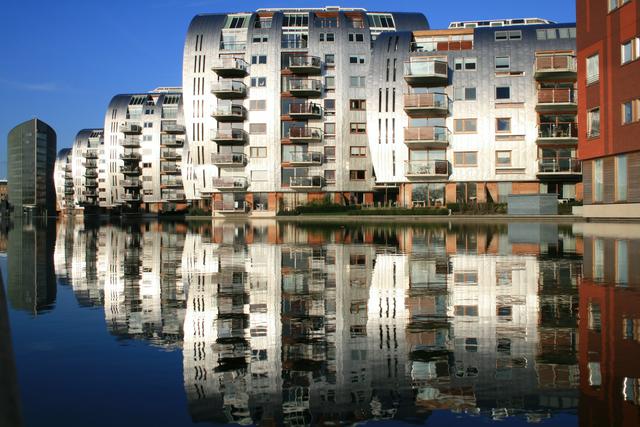
De Drie Gezusters, Karrenstraat. Opens at 21:00, but the scene starts at around 23:00. Open until 04:00. Entrance, coatcheck.
Cinq, Parade, +31 73 6900768. Entrance depends on attendance. Busy nights require around entrance to be paid.
De Carrousel, Karrrenstraat, +31 73 6900311. Starts at around 22:00 until 04:00, sometimes later.
Silva Ducis, Parade, +31 73 6130405. 10:00-16:00.
Den Bosch uses the area code 073.
Den Bosch is in general a safe city. Even the neighborhoods considered dangerous by the locals are still quite safe during daylight (Hambaken, Graafsewijk and Kruiskamp). If a traveler uses his common sense he will be alright, also during night. The only time the crowd can get a bit rough is during Thursday, Friday and Saturday night. These are the general party nights, so people sometimes drink too much. Watch out to the drunk people that might easily start brawls (especially during the carnival).
Well connected and at a fairly central location, there are endless options for next destinations when leaving 'sHertogenbosch. Some of the more prominent nearby places are Utrecht, Tilburg, Eindhoven, Breda and Nijmegen. Families will find fun all year round at the Efteling, the country's largest theme park. The Loonse en Drunense Duinen National Park is also a short ride away.
